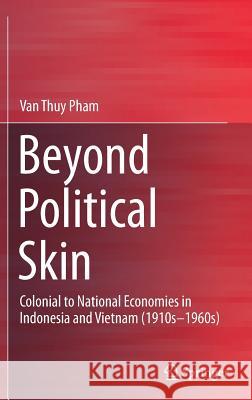Beyond Political Skin: Colonial to National Economies in Indonesia and Vietnam (1910s-1960s) » książka
topmenu
Beyond Political Skin: Colonial to National Economies in Indonesia and Vietnam (1910s-1960s)
ISBN-13: 9789811337109 / Angielski / Twarda / 2019 / 247 str.
Kategorie:
Kategorie BISAC:
Wydawca:
Springer
Język:
Angielski
ISBN-13:
9789811337109
Rok wydania:
2019
Wydanie:
2019
Ilość stron:
247
Waga:
0.59 kg
Wymiary:
23.5 x 15.5
Oprawa:
Twarda
Wolumenów:
01
Dodatkowe informacje:
Bibliografia
Wydanie ilustrowane
Wydanie ilustrowane











